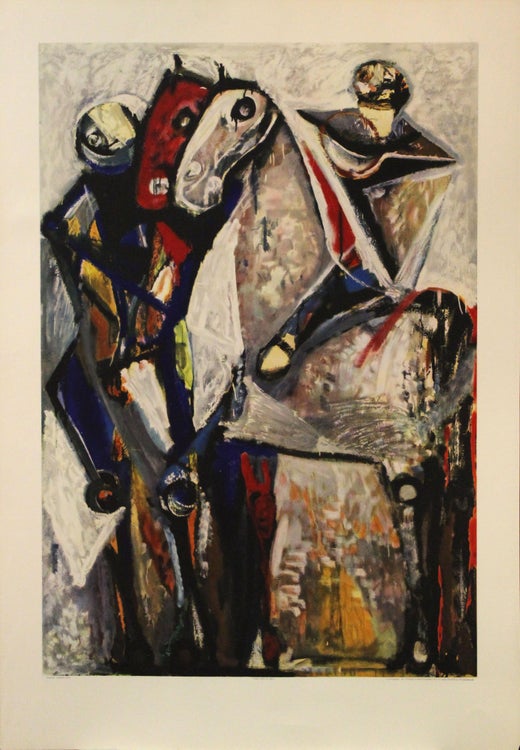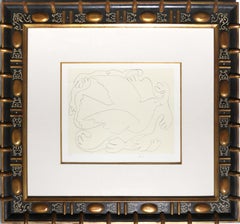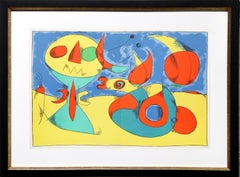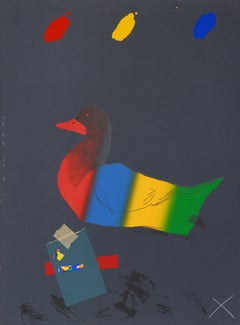Marino MariniChevaux et Cavaliers III, Lithograph by Marino Marini1972
1972
About the Item
- Creator:Marino Marini (1901-1980, Italian)
- Creation Year:1972
- Dimensions:Height: 26 in (66.04 cm)Width: 30 in (76.2 cm)
- Medium:
- Movement & Style:
- Period:
- Condition:
- Gallery Location:Long Island City, NY
- Reference Number:1stDibs: LU46610061972
Marino Marini
Marino Marini was born in Italy in 1901. Retrospectives of Marini's work took place at the Kunsthaus Zürich in 1962 and at the Palazzo Venezia in Rome in 1966. His paintings were exhibited for the first time at Toninelli Arte Moderna in Milan in 1963–64. In 1973, a permanent installation of his work opened at the Galleria d'Arte Moderna in Milan, and in 1978 a Marini show was presented at the National Museum of Modern Art in Tokyo. Marini died in Viareggio. There is a museum dedicated to his work in Florence (in the former church of San Pancrazio); his work may also be found in museums in Italy and around the world, such as the Civica Galleria d'Arte Moderna in Milan and the Hirshhorn Museum and Sculpture Garden in Washington, D.C. Marini's work is authenticated by the experts at the Marino Marini Foundation in Pistoia, Italy.
You May Also Like
1960s Modern Animal Prints
Lithograph
1960s Modern Figurative Prints
Lithograph
1950s Modern Figurative Prints
Lithograph
1960s Modern Animal Prints
Lithograph
1960s Modern Animal Prints
Lithograph
1970s Modern Animal Prints
Lithograph
1960s Modern Animal Prints
Lithograph
1960s Modern Animal Prints
Lithograph
1960s Modern Animal Prints
Lithograph
1960s Modern Animal Prints
Lithograph
More From This Seller
View All1980s Modern Animal Prints
Lithograph
1950s Modern Animal Prints
Lithograph
1970s Contemporary Animal Prints
Lithograph, Screen
1960s Pop Art Animal Prints
Lithograph
1970s Surrealist Figurative Prints
Lithograph
1970s Surrealist Figurative Prints
Lithograph
Recently Viewed
View AllRead More
Romare Bearden’s Humanity Infuses His Bright, Bold Art
Through collage, painting and printmaking, the artist foregrounded Black life in America in revolutionary new ways.
Chryssa’s 1962 Neon Sculpture Was Way ahead of the Art-World Curve
By working with lettering, neon and Pop imagery, Chryssa pioneered several postmodern themes at a time when most male artists detested commercial mediums.



